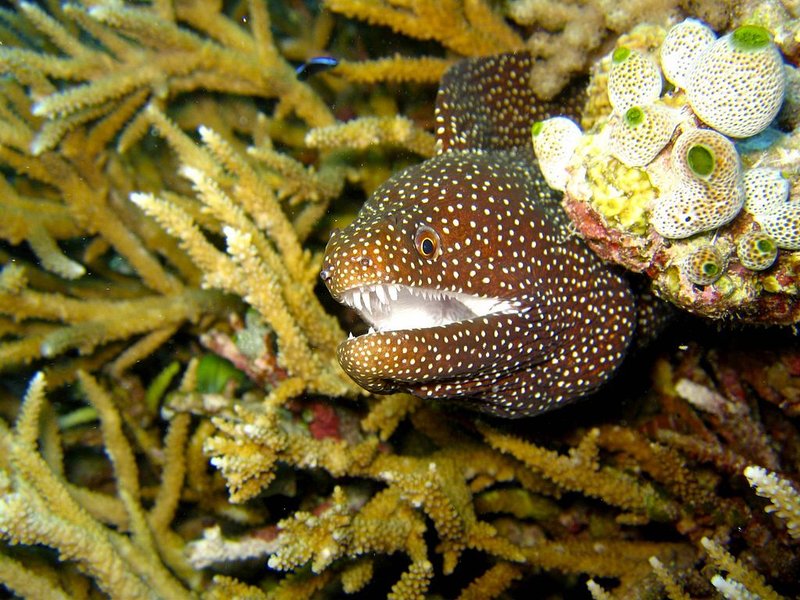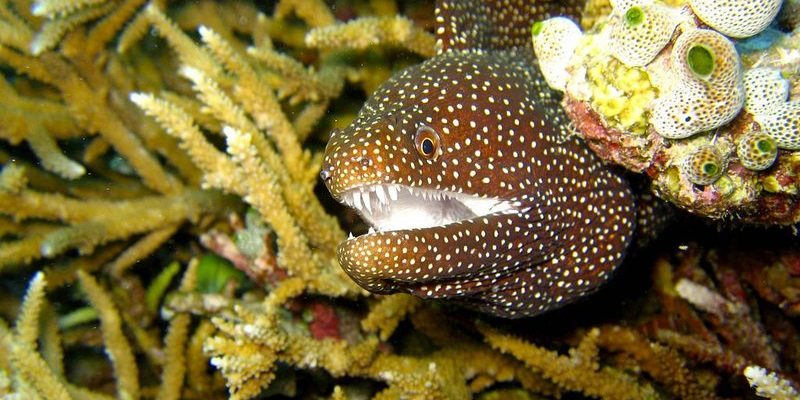
Moray eels belong to the Muraenidae family and are mostly found in warm, shallow waters. Their elongated bodies and distinctive patterns make them stand out in the coral reefs where they reside. But what’s even more interesting is how they’ve evolved over time to become the impressive hunters they are today. So, grab your coffee, and let’s dive into the evolutionary journey of the moray eel!
The Origins of Moray Eels
To understand the moray eel’s evolution, we need to travel back in time—about 300 million years ago, to be precise. Moray eels are part of the order Anguilliformes, which means they share a distant ancestor with other elongated fish like catfish and true eels. During that time, the earth was a very different place. As continents drifted and climates changed, so did the species living in these waters.
Interestingly, moray eels are believed to have originated in the Tethys Sea, a vast body of water that existed during the Mesozoic Era. As this sea receded and split into smaller water bodies, moray eels adapted to various new environments. These adaptations weren’t just physical; they also included behavioral changes that allowed them to thrive in specific habitats, like coral reefs or rocky outcrops.
As they evolved, these eels developed unique adaptations that make them distinct from other types of fish. Their bodies flattened out, and they gained a more elongated shape, allowing them to navigate through narrow crevices and caves. This physical transformation is akin to how a snake slithers through grass, making it easier for them to hide from predators and ambush prey.
The Physical Features of Moray Eels
Moray eels are hard to miss, thanks to their eye-catching appearances. They can range in color from soft browns and greens to vibrant blues and yellows, often with intricate patterns that serve as camouflage among the coral. This coloring helps them avoid detection by both prey and predators, making it easier for them to blend into their surroundings.
Their bodies are uniquely structured for a life of ambush predation. Unlike many fish, moray eels have a long, flexible body that allows them to move stealthily through rocky crevices. Their small pectoral fins assist with steering, while their powerful tails propel them forward.
One of their most intriguing features is their double set of jaws. When a moray eel catches its supper, it uses its primary jaws to secure the prey. Then, a second set of jaws, known as pharyngeal jaws, comes into play to help grasp and pull the victim down their throat. This unique feature is quite rare in the animal kingdom and underscores the moray’s adaptation as a skilled predator.
Habitat and Distribution
Moray eels are typically found in tropical and subtropical waters, mostly in shallow reefs where they can easily hide from potential threats. They tend to prefer rocky crevices and coral reefs, which provide not only shelter but also an abundance of food like fish, crustaceans, and even octopuses.
The distribution of moray eels is quite broad. You can find them in the Atlantic, Indian, and Pacific Oceans. Some species even venture into brackish waters. The diverse habitats they occupy are essential for their survival, as different environments allow them to exploit various food sources and avoid competition.
While some moray eels prefer deeper waters, most stay within a few meters of the surface. This places them in direct competition with other marine creatures, but it also gives them access to a wealth of food options. Here’s the thing: their secretive nature and the ability to camouflage greatly enhance their chances of survival in these habitats.
Their Role in the Ecosystem
Moray eels play a significant role in their marine ecosystems. As predators, they help keep fish populations in check, contributing to the balance of life in coral reefs. By feeding on smaller fish and crustaceans, they prevent overpopulation, which can lead to ecosystem instability.
These eels are also essential for maintaining biodiversity. Their predatory behavior encourages a healthy food web, allowing various species to thrive. When moray eels hunt, they often displace smaller fish, making room for others to take their place. This dynamic helps promote genetic diversity among marine species, which is crucial for adaptability.
Interestingly, moray eels have a symbiotic relationship with certain species of cleaner fish. These tiny fish often swim into the moray’s mouth, cleaning out parasites and dead tissue. In return, the moray receives a dental check-up, and the cleaner fish enjoy a meal. It’s a win-win situation that showcases the interconnectedness of marine life.
Behavior and Hunting Techniques
Moray eels are known for their secretive behavior. You might see just the head of one peeking out from a crevice, ready to strike at unsuspecting prey. Their hunting technique is primarily ambush-based, relying on surprise rather than speed.
When moray eels hunt, they remain perfectly still, often camouflaged against their surroundings. Their keen eyesight helps them detect movement in the water, while their acute sense of smell allows them to track down prey from a distance. Once they have identified a target, they strike with lightning speed.
Here’s a fun fact: moray eels have been observed using their surroundings to their advantage. They can leverage rocks or coral to pin down their prey, making it harder for the victim to escape. Watching a moray eel in action reveals just how skilled these creatures are at hunting.
Conservation and Threats
Despite their fascinating adaptations, moray eels face several threats today. Overfishing is a significant concern, particularly in areas where they are prized in local cuisine or as aquarium pets. Habitat destruction from coral reef degradation also poses a serious risk, as these eels rely heavily on coral reefs for shelter and food.
Climate change is another challenge. Rising ocean temperatures can lead to coral bleaching, which ultimately affects the entire marine ecosystem, including moray eels. When their habitat collapses, it’s not just the morays that suffer; countless other species depend on a healthy reef structure.
Conservation efforts are underway in various regions to help protect moray eel populations. Marine protected areas (MPAs) have been established to safeguard critical habitats, and organizations are working to raise awareness about sustainable fishing practices. Here’s the thing: the survival of moray eels and their ecosystems depends on our collective efforts to protect them.
The Future of Moray Eels
Looking ahead, the future of moray eels is uncertain. It’s clear that human activity significantly impacts their populations and habitats. Yet, with ongoing conservation efforts and greater awareness, there is still hope for these amazing creatures.
The evolutionary journey of the moray eel is a testament to the resilience of nature. They’ve developed incredible adaptations that allow them to thrive in challenging environments for millions of years. Understanding their history and the challenges they face is essential for ensuring they continue to grace our oceans.
Ultimately, moray eels remind us of the beauty and complexity of marine life. As we explore and protect our oceans, we also safeguard the incredible stories of each species, including the moray eel. So next time you spot one, take a moment to appreciate the fascinating journey they’ve taken through time.

